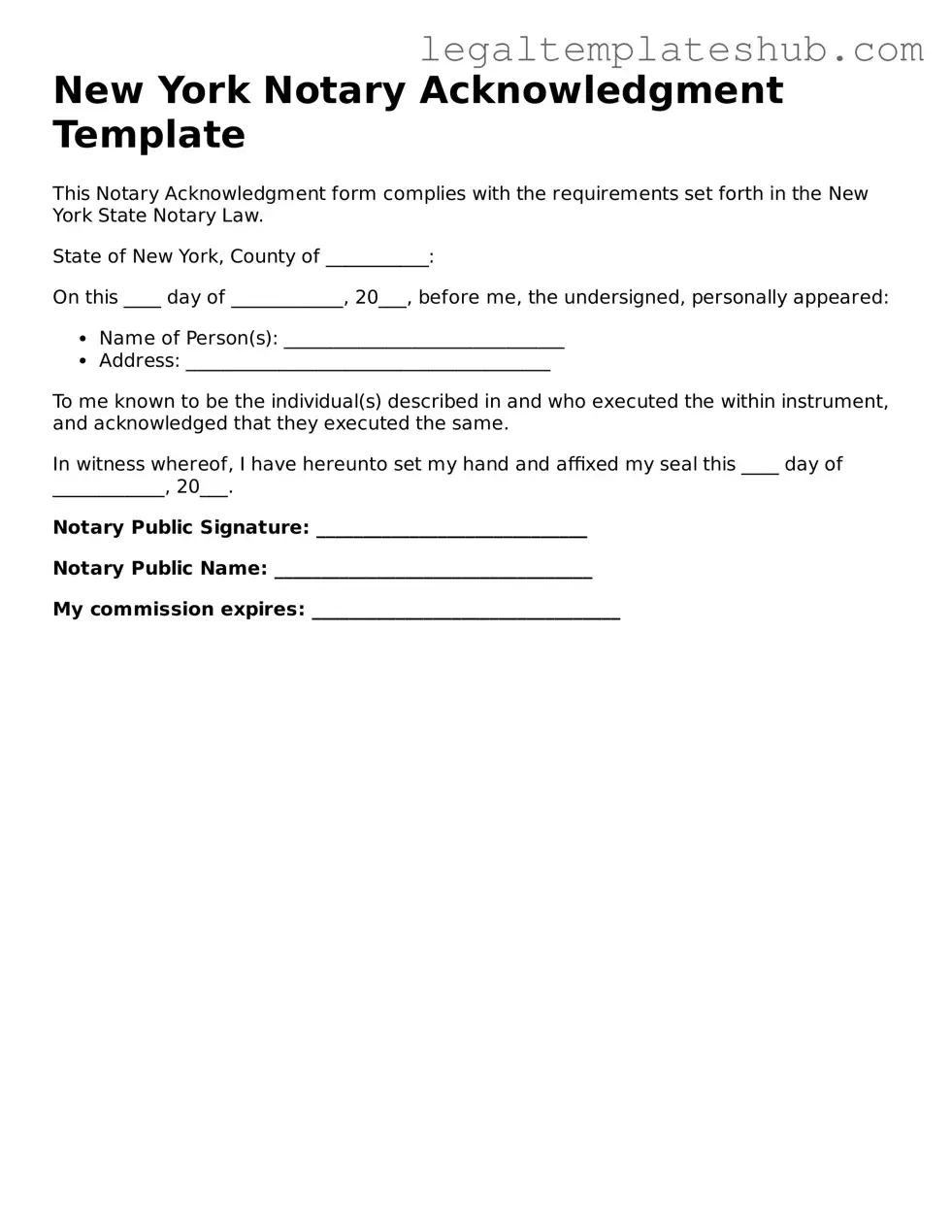Instructions on Filling in New York Notary Acknowledgement
After obtaining the New York Notary Acknowledgment form, you will need to complete it accurately to ensure it meets all requirements. Follow these steps to fill out the form correctly.
- Begin by entering the name of the person whose signature is being acknowledged. This should be the individual who signed the document.
- Next, provide the date on which the acknowledgment is being made. This is typically the date you are completing the form.
- In the designated area, indicate the state where the acknowledgment is taking place. For this form, it will be New York.
- Write the county in which the acknowledgment is being executed. Make sure to check the correct county name.
- Provide the name of the notary public who will be signing the form. This person must be a licensed notary in New York.
- Fill in the notary's signature. The notary should sign the form in the appropriate section.
- Finally, include the notary's official stamp or seal, if required. This adds authenticity to the acknowledgment.
Once the form is filled out, it should be reviewed for accuracy. Ensure that all names, dates, and signatures are legible and correctly placed. After that, the notary will finalize the acknowledgment, making it ready for use.
